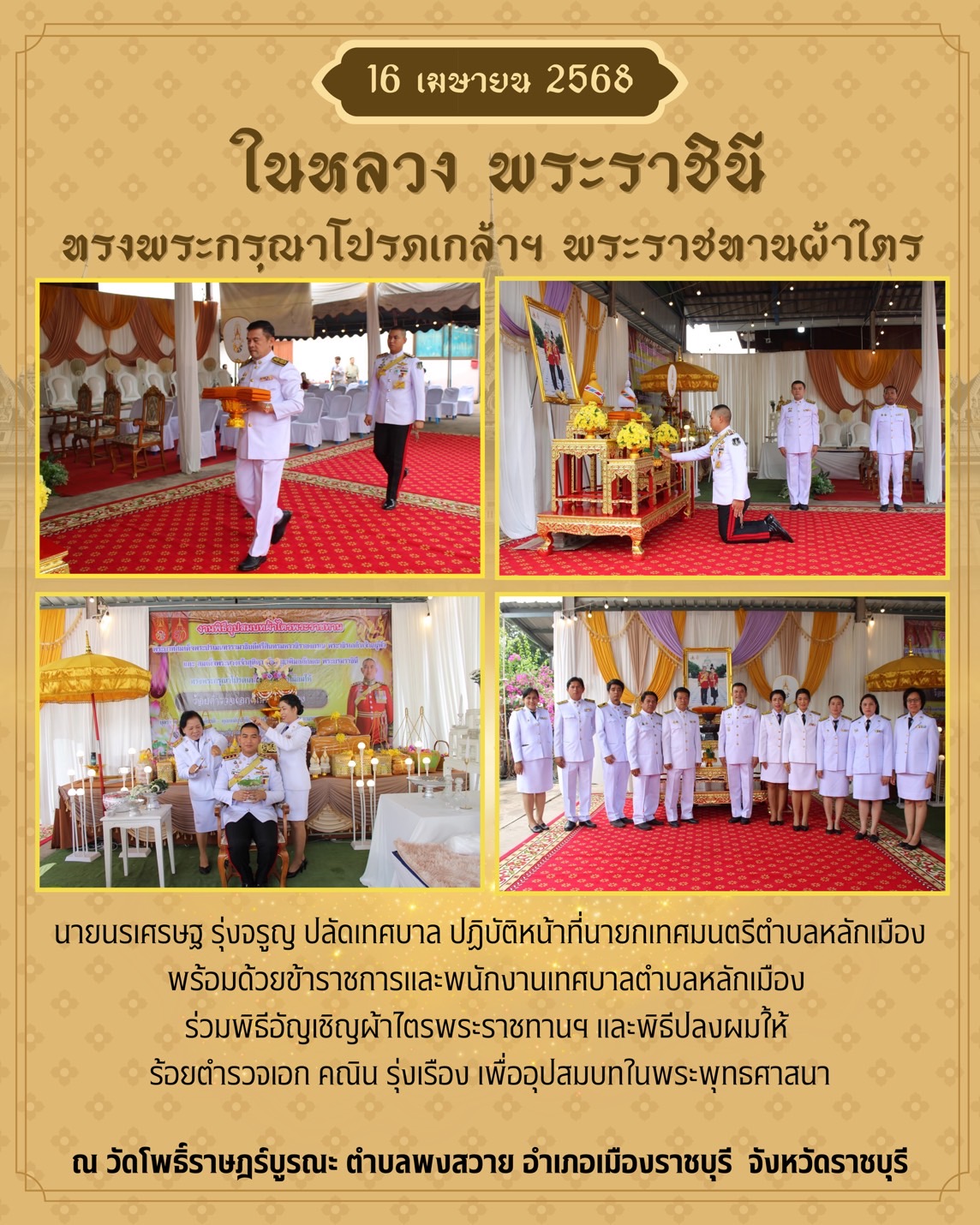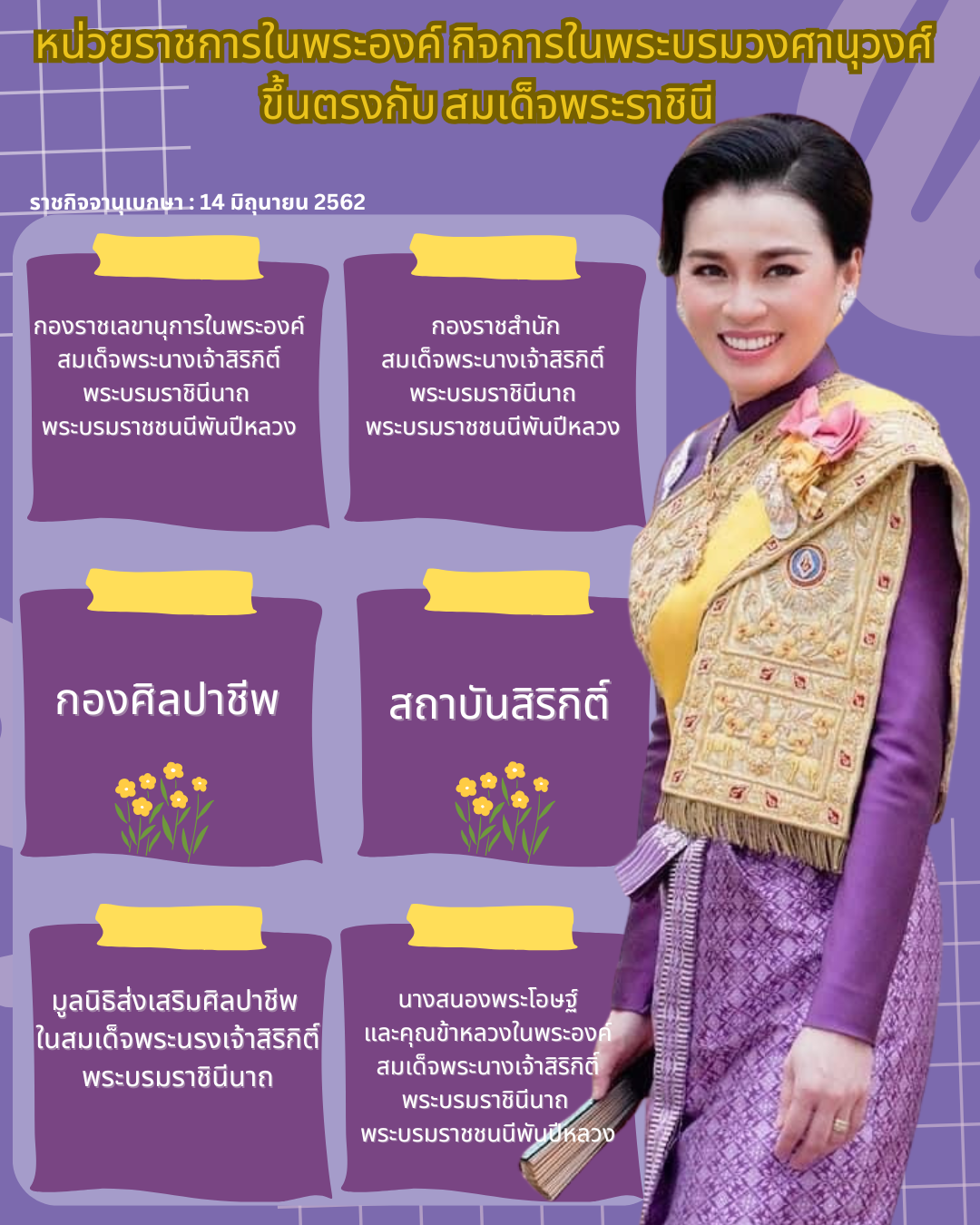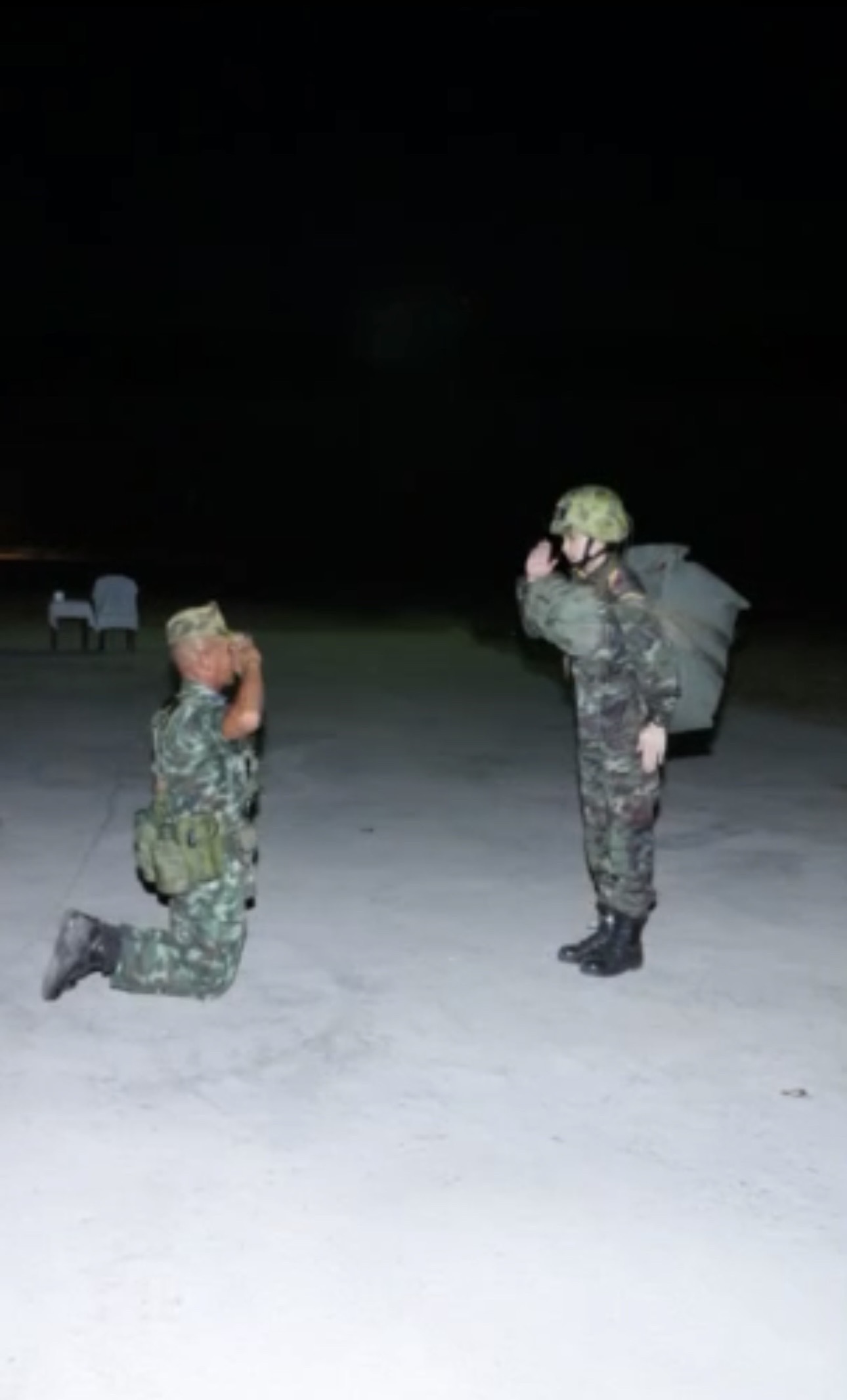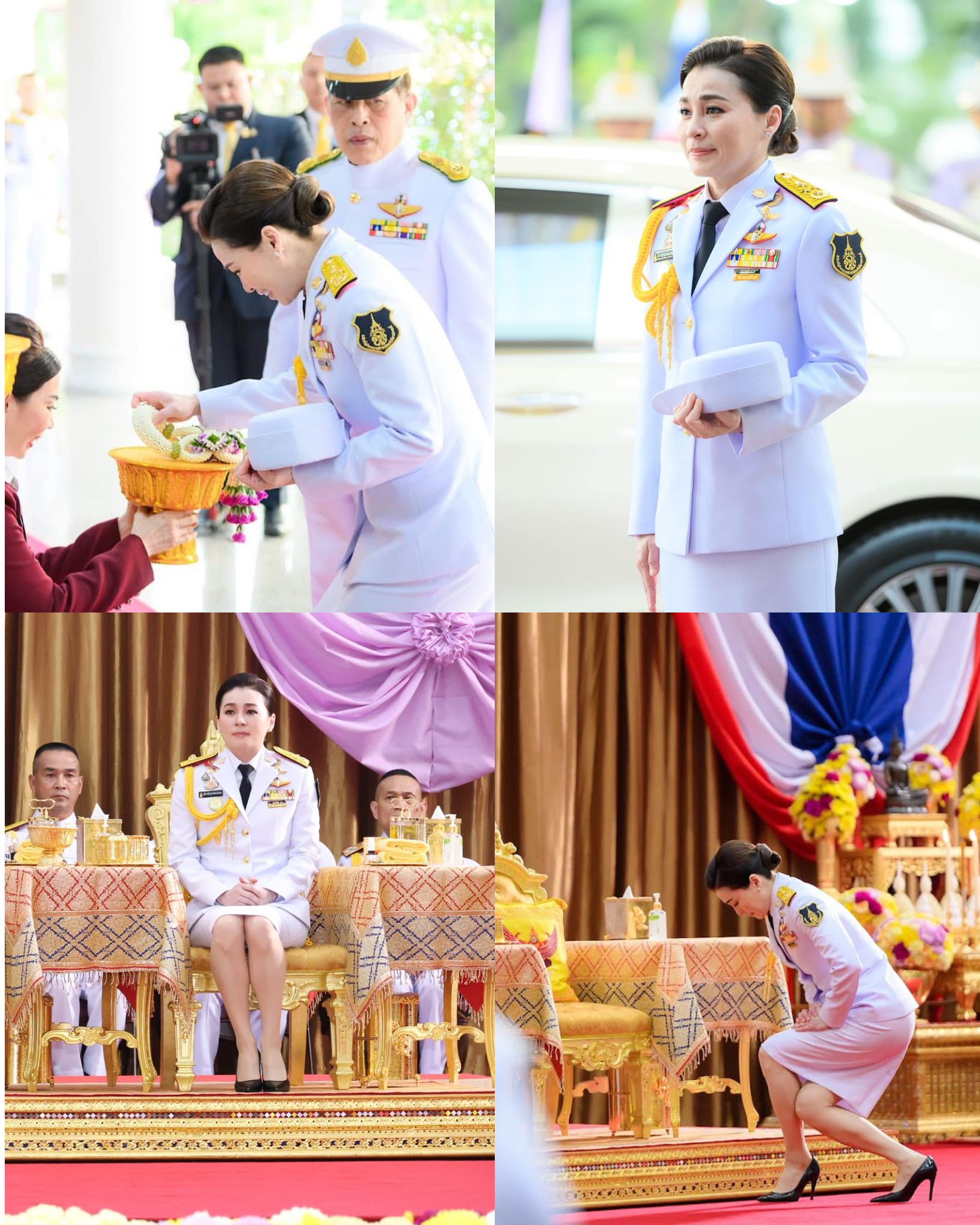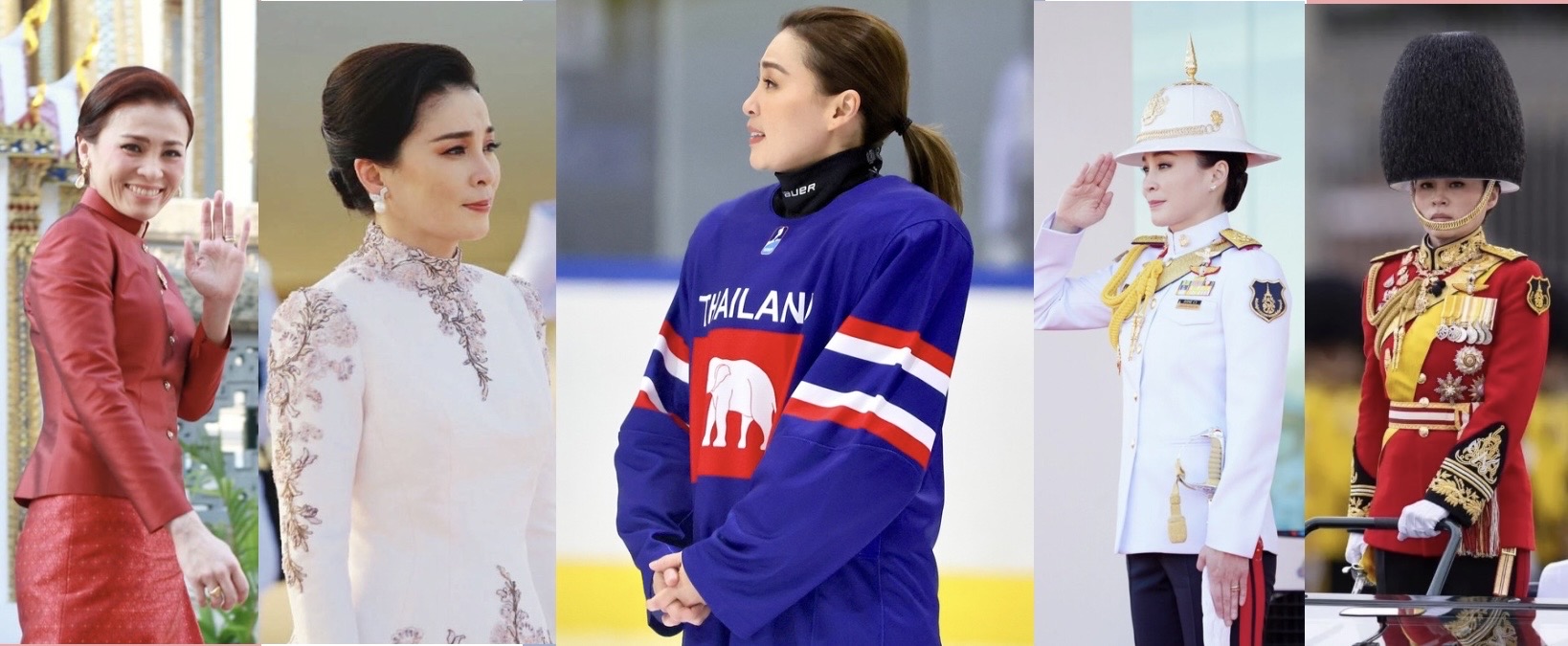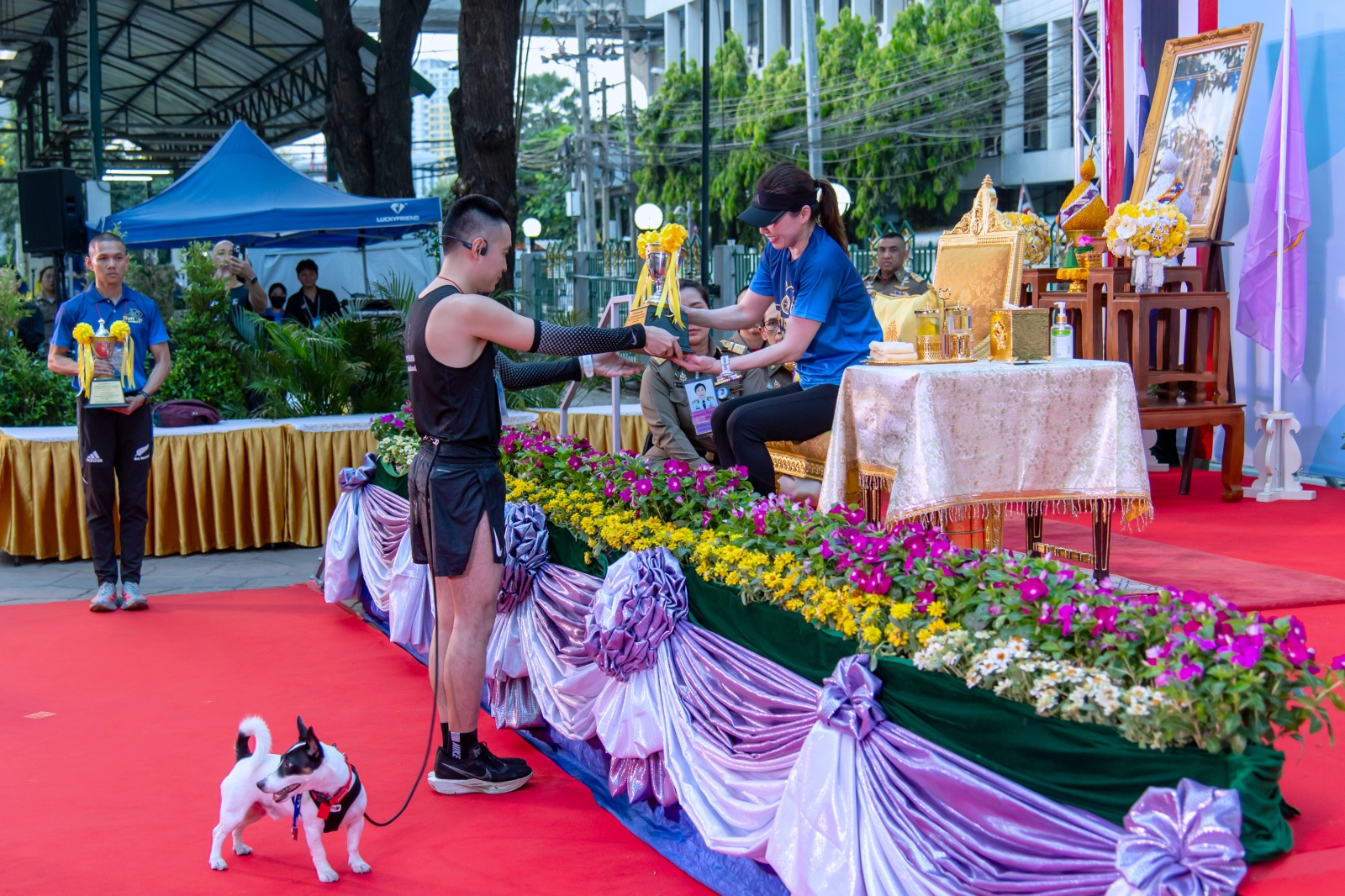ฉลองพระองค์ไทยอมรินทร์ ผ้าไหมพื้นเรียบปักลูกปัด
พระภูษาผ้าไหมยกดอก ลายกลีบบงกช
ภูฏานเป็นเพียงประเทศเดียวในโลกที่ยอมรับนับถือพุทธศาสนามหายานแบบตันตระ เป็นศาสนาประจำชาติอย่างเป็นทางการ นิกายตันตรยานหรือวัชรยานถือกำเนิดขึ้นในช่วงสุดท้ายของพัฒนาการอันยาวนานของพุทธศาสนา พุทธศาสนาตันตรายานสูญหายไปจากอินเดียซึ่งเป็นดินแดนต้นกำเนิดในช่วงที่พวกมุสลิมยกมารุกรานในต้นศตวรรษที่ ๑๓ และไปรุ่งเรืองอยู่ในทิเบต ลาดัคห์ สิกขิม มองโกเลีย ภาคเหนือของเนปาล ภูฏาน จีน และญี่ปุ่นแทน
สิ่งที่ชาวภูฏานถือเป็นสัญลักษณ์แห่งความมงคล ๘ ประการ ของชีวิตตามความเชื่อและความศรัทธา ซึ่งสิ่งเหล่านี้มักจะปรากฎเป็นรูปเคารพตามโบราณสถาน ตลอดจนในบ้านเรือน ของผู้นับถือพุทธศาสนามหายานแบบตันตระ หนึ่งสิ่งนั้นคือ ปัทมะ
ปัทมะ หรือ ดอกบัว (Lotus หรือ meto pema) ดอกบัวมีความหมายเหมือนสังข์ขาว ดอกบัวถือเป็นตัวแทนพระพุทธเจ้า ดังพุทธวัจนะที่ว่า “ดอกบัวเกิดแต่โคลนตมในนน้ำ แต่ไม่เปียกน้ำ พระพุทธเจ้าก็เช่นกัน เกิดในโลก แต่ไม่เปรอะเปื้อนด้วยมลทินของโลกฉันนั้น”
-------
HER ROYAL ATTIRE IN THAI AMARIN
EMBROIDERED BEADS LUMPHUN BROCADE SILK
PETALS OF LOTUS MOTIF
Bhutan is the only country in the world to accept Tantric Mahayana Buddhism as its official state religion. Tantric or Vajrayana Buddhism emerged at the end of a long development of Buddhism. Tantric Buddhism disappeared from its homeland of India during the Muslim invasions in the early 13th century and flourished instead in Tibet, Ladakh, Sikkim, Mongolia, northern Nepal, Bhutan, China and Japan.
The Bhutanese believe in the Eight Auspicious Symbols of Life, which are often depicted in ancient monuments and in the homes of Tantric Mahayana Buddhists. One of these is the Padma.
The Padma or Lotus (meto pema) is like a white conch shell. The lotus is considered to represent the Buddha, as the Buddha said: “A lotus flower is born from the mud in the water, but it is not wet with water. Similarly, the Buddha was born in the world, but it was not stained by the world’s impurities.”
_________________________________
#พระราชินีสุทิดา #苏提达王后 #QueenSuthida
Cr. FB : สมเด็จพระนางเจ้าฯ พระบรมราชินี : We Love Her Majesty Queen Suthida Fanpage
ฉลองพระองค์ไทยอมรินทร์ ผ้าไหมพื้นเรียบปักลูกปัด
พระภูษาผ้าไหมยกดอก ลายกลีบบงกช
ภูฏานเป็นเพียงประเทศเดียวในโลกที่ยอมรับนับถือพุทธศาสนามหายานแบบตันตระ เป็นศาสนาประจำชาติอย่างเป็นทางการ นิกายตันตรยานหรือวัชรยานถือกำเนิดขึ้นในช่วงสุดท้ายของพัฒนาการอันยาวนานของพุทธศาสนา พุทธศาสนาตันตรายานสูญหายไปจากอินเดียซึ่งเป็นดินแดนต้นกำเนิดในช่วงที่พวกมุสลิมยกมารุกรานในต้นศตวรรษที่ ๑๓ และไปรุ่งเรืองอยู่ในทิเบต ลาดัคห์ สิกขิม มองโกเลีย ภาคเหนือของเนปาล ภูฏาน จีน และญี่ปุ่นแทน
สิ่งที่ชาวภูฏานถือเป็นสัญลักษณ์แห่งความมงคล ๘ ประการ ของชีวิตตามความเชื่อและความศรัทธา ซึ่งสิ่งเหล่านี้มักจะปรากฎเป็นรูปเคารพตามโบราณสถาน ตลอดจนในบ้านเรือน ของผู้นับถือพุทธศาสนามหายานแบบตันตระ หนึ่งสิ่งนั้นคือ ปัทมะ
ปัทมะ หรือ ดอกบัว (Lotus หรือ meto pema) ดอกบัวมีความหมายเหมือนสังข์ขาว ดอกบัวถือเป็นตัวแทนพระพุทธเจ้า ดังพุทธวัจนะที่ว่า “ดอกบัวเกิดแต่โคลนตมในนน้ำ แต่ไม่เปียกน้ำ พระพุทธเจ้าก็เช่นกัน เกิดในโลก แต่ไม่เปรอะเปื้อนด้วยมลทินของโลกฉันนั้น”
-------
HER ROYAL ATTIRE IN THAI AMARIN
EMBROIDERED BEADS LUMPHUN BROCADE SILK
PETALS OF LOTUS MOTIF
Bhutan is the only country in the world to accept Tantric Mahayana Buddhism as its official state religion. Tantric or Vajrayana Buddhism emerged at the end of a long development of Buddhism. Tantric Buddhism disappeared from its homeland of India during the Muslim invasions in the early 13th century and flourished instead in Tibet, Ladakh, Sikkim, Mongolia, northern Nepal, Bhutan, China and Japan.
The Bhutanese believe in the Eight Auspicious Symbols of Life, which are often depicted in ancient monuments and in the homes of Tantric Mahayana Buddhists. One of these is the Padma.
The Padma or Lotus (meto pema) is like a white conch shell. The lotus is considered to represent the Buddha, as the Buddha said: “A lotus flower is born from the mud in the water, but it is not wet with water. Similarly, the Buddha was born in the world, but it was not stained by the world’s impurities.”
_________________________________
#พระราชินีสุทิดา #苏提达王后 #QueenSuthida
Cr. FB : สมเด็จพระนางเจ้าฯ พระบรมราชินี : We Love Her Majesty Queen Suthida Fanpage









